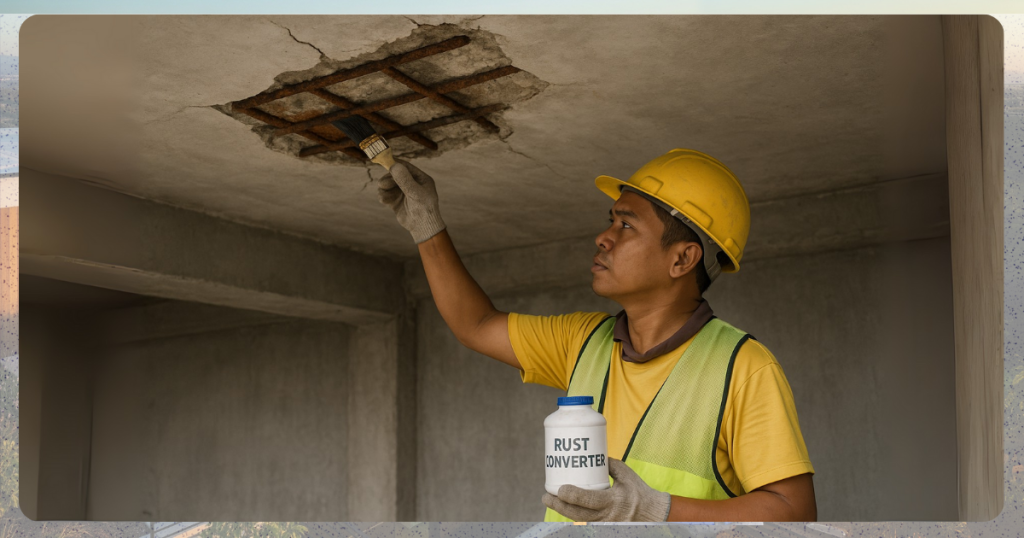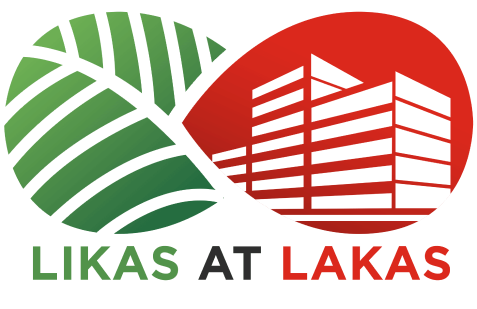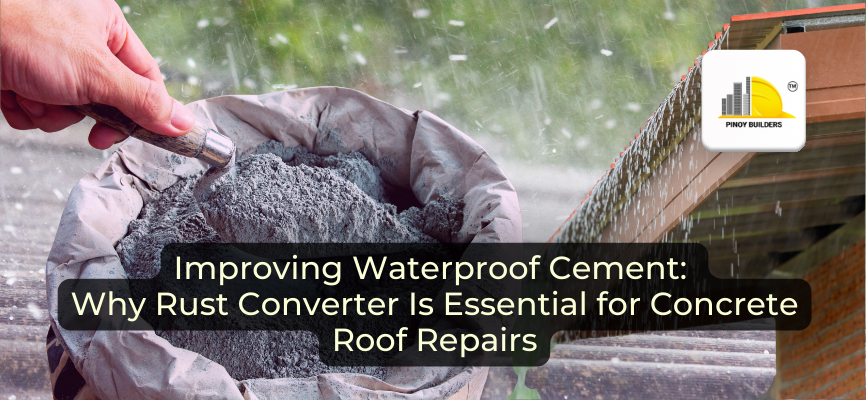A well-built concrete roof does more than cover a house. It shields families from strong rains, blocks heat during the day, and protects the structure for years. Using waterproof cement adds an important layer of defense, keeping moisture out and reducing damage. Still, a roof’s strength also depends on the hidden reinforcements inside the concrete.
This is where a rust converter makes a big difference. It treats rust on metal bars, turning it into a stable layer that prevents further corrosion. With reinforcements kept in good condition, the entire roof becomes tougher and longer-lasting. Homeowners not only gain peace of mind but also get more value from every repair.
In this article, we will take a deeper look into why a rust converter is essential for concrete roof repairs, how to use it, and how it improves the performance of waterproof cement during roof repairs.

Why Waterproofing Matters for Homes
Rainy seasons bring challenges to many households. Leaks, seepage, and moisture can find their way into ceilings and walls. Without proper waterproofing methods, these small issues can lead to bigger structural problems.
Waterproof cement acts as a shield against water penetration. It prevents moisture from entering the surface and damaging the concrete. Still, there is more happening beneath the surface where the steel reinforcements lie. Cement seals the outside, but reinforcements need protection too.
What is Rust Converter and Why It’s Important
Rust converter is a special solution used in construction and repair. It is designed to treat rust on steel and turn it into a stable surface. Once applied, it prevents the corrosion from spreading further.
Steel reinforcements are the backbone of concrete structures. Over time, moisture can reach them and cause rusting. When this happens, the concrete loses some of its strength. Rust converter stops this from happening and creates a foundation for stronger repairs.
Here are the key benefits of using rust converter:
- Stops rust from spreading further.
- Creates a stable base for cement, paint, or coatings.
- Adds extra protection for steel reinforcements and metal fixtures.
How Rust Converter Works
Rust converter works through a chemical reaction that changes rust into a stable, protective layer. Most products contain tannic acid and an organic polymer such as 2-butoxyethanol.
Tannic acid reacts with rust, which is actually iron oxide, and transforms it into iron tannate. This dark, stable compound no longer corrodes and acts as a protective barrier. At the same time, the polymer forms a primer-like coating that helps waterproof cement, paint, or sealants stick better.
This reaction is what makes repairs more effective. Instead of just covering rust, the converter chemically neutralizes it and locks it in place. With waterproof cement sealing the surface and rust converter protecting the steel inside, concrete roofs gain a complete and lasting defense.
General Guide: Using Rust Converter in Roof Repairs

Applying a rust converter in roof repairs is simple. With a few steps, you can strengthen both the visible and hidden parts of their roof. Below is a general step-by-step guide on how to use a rust converter in concrete roof repairs.
Step 1. Identify rusted areas. Check for exposed reinforcements or visible rust on the roof’s concrete. Use a chipping gun or a hammer and chisel to remove loose materials.
Step 2. Clean the surface. With a brush or a vacuum, remove loose rust, dust, and debris.
Step 3. Apply the rust converter. Spread it evenly on the rusted steel, and let it cure properly (depending on the product, curing takes around 2-3 hours).
Step 4. Proceed with repair. Once dry, continue with a concrete mix using waterproof cement or an added waterproofing compound, then finish with paint or coatings for maximum protection.
Rust converters are not limited to concrete roof reinforcements. It can also be applied on metal gates, railings, fences, and household fixtures that are prone to rust. For these, the process is similar: clean the metal surface, apply the converter, let it cure, and finish with paint or protective coating. This versatility makes a rust converter a valuable tool for both structural repairs and everyday home maintenance.
A Stronger Approach to Roof Repairs
Waterproof cement provides a reliable shield against rain and moisture. Rust converter adds strength to what lies beneath by protecting the steel reinforcements that hold concrete together.
Combining these two solutions extends the life of a roof and enhances resistance to leaks. For homeowners, using both waterproof cement and rust converter means a safer, stronger, and longer-lasting home.
References
Step Guide. (2024, May 29). When And How To Use Rust Converter – Blog. Haymes Paint. Retrieved September 4, 2025, from https://www.haymespaint.com.au/inspiration/blog/when-and-how-to-use-rust-converter
Roofshield. (2024, May 8). Understanding Roof Rust: Causes, Prevention, and Replacement. Roofshield. Retrieved September 4, 2025, from https://roofshield.com.au/understanding-roof-rust-causes-prevention-and-replacement/
The Rust Store. (n.d.). Rust Converter FAQ’s. The Rust Store. Retrieved 9 4, 2025, from https://www.theruststore.com/blogs/articles/rust-converter-faq-s?srsltid=AfmBOor_BBWcE3CrPdOH1e3fIh549RKtgU-WrAC9pPDm9ZpwacEOlwSS










